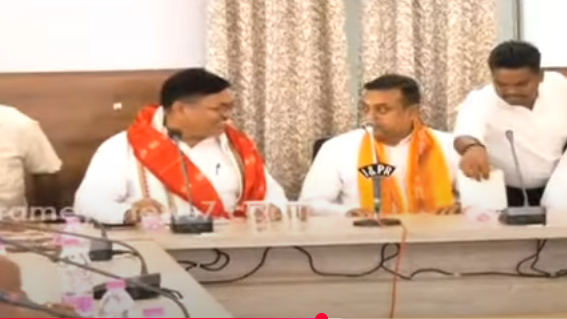

Puri's Sacred Festival: Will New Measures Prevent Future Disruptions?
The annual Rath Yatra in Puri is one of the most profound spiritual spectacles on the planet, a time when the deities leave their temple sanctuary to connect with millions of devotees. The sanctity and smooth conduct of this festival are paramount. Unfortunately, the recent Yatra was troubled by significant administrative failures and mismanagement, sparking public outcry and forcing the Odisha government to undertake an urgent and comprehensive review.
Breakdown in Order and Tradition
The core of the controversy stemmed from a visible breakdown in discipline and execution. A primary concern was the alarming number of unauthorized individuals who found their way onto the sacred chariots. This was widely seen not just as a security lapse, but as a violation of deeply held traditions that dictate who is permitted in such close proximity to the deities. This incident, symptomatic of broader administrative shortcomings, created disorder and distress.
The issues ran deeper than just crowd control. The sevayats, the traditional servitors of the temple whose families have performed these duties for generations, expressed their own dissatisfaction. Their concerns pointed to a disconnect with the administration regarding the management of rituals and a feeling that their welfare was being overlooked. This internal friction highlighted a systemic problem that threatened the very heart of the festival's operations.
The Government's Response and Path to Reform
Facing mounting pressure, the state government has initiated a series of high-level interventions. The Chief Minister and the Law Minister have personally chaired meetings to dissect the failures and formulate a robust plan for the future. A significant outcome of these discussions is a renewed focus on the holistic welfare of the sevayat community. The government has committed to developing programs for their health, housing, and the education of their children, acknowledging that their well-being is crucial for the temple's functioning.
To prevent these issues from fading into memory, a new policy has been established: review meetings will now be held every three months. This ensures a continuous dialogue on the temple's traditions, culture, and the practical needs of the servitors. Furthermore, new officials have been tasked with overseeing temple affairs, bringing fresh perspectives to the management of the Yatra.
Lingering Questions and the Road Ahead
Despite these positive steps, complex debates and concerns remain. A statement from the Law Minister questioning the term "unauthorised sevayat" has sparked confusion and discussion, suggesting a need for clearer definitions and rules. Some observers argue that a root cause of the recurring problems is a declining understanding of the religious scriptures and traditions among both administrators and some servitors. This points to a need for deeper educational and cultural grounding.
As the administration prepares for the upcoming Bahuda Yatra and Suna Besha, the focus is on immediate improvements in crowd management and discipline. However, the larger challenge is one of trust and execution. The devotees and servitors are watching closely, hopeful that these governmental promises will translate into meaningful, lasting change. The ultimate goal is to ensure that the Rath Yatra can proceed not as an exercise in crisis management, but as a peaceful, organized, and spiritually uplifting experience for everyone involved. The success of these reforms will determine the future harmony of this sacred tradition.